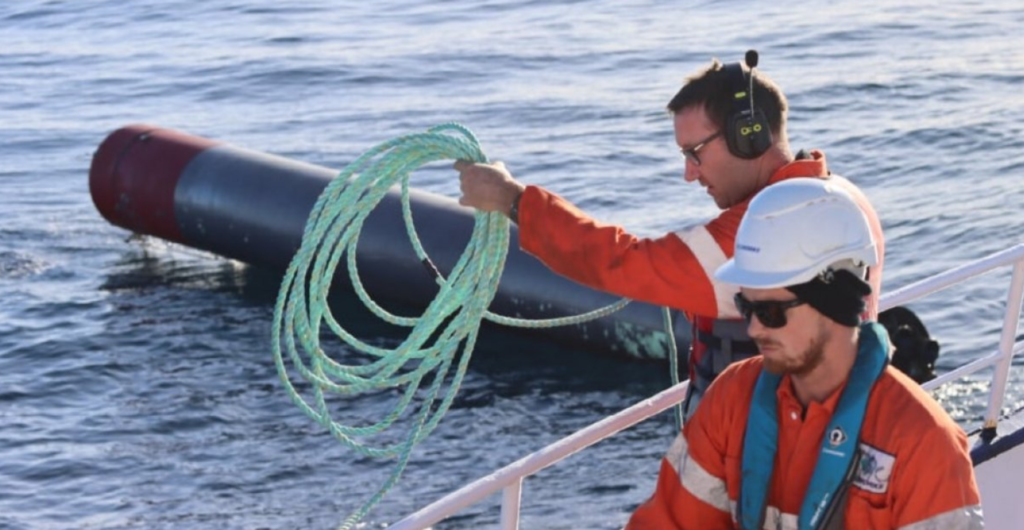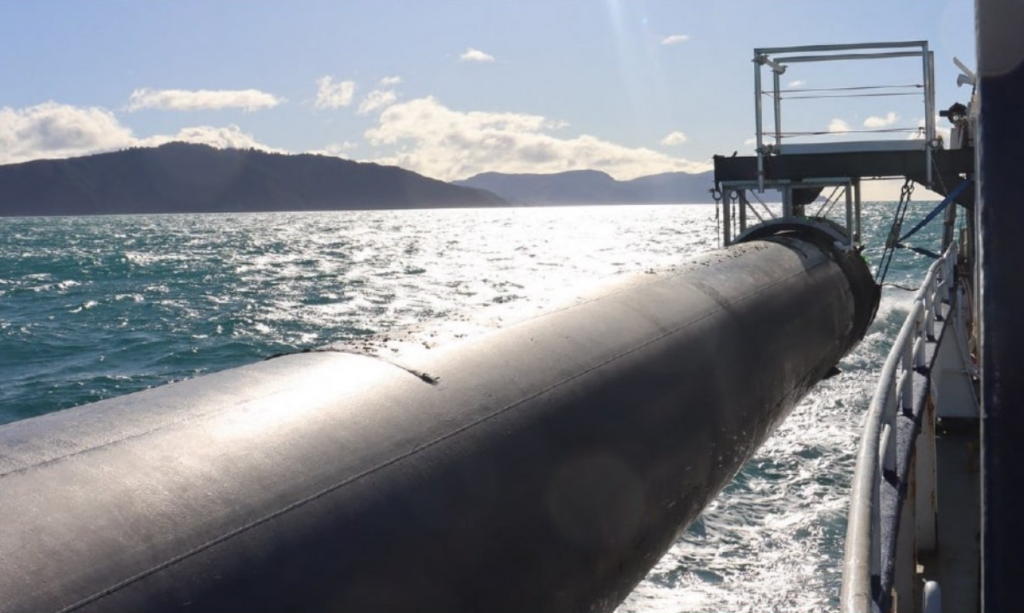Over the past few years, we’ve seen Rocket Lab continue to make progress toward reusing the Electron rocket’s first stage. Over time this strategy has changed quite a bit from initial helicopter catch attempts to a controlled splashdown and refurbishment.
That being said, it seems we are hearing much less about this process as the company makes a push toward Neutron development, their larger and more advanced, partially reusable launch vehicle.
Electron Reuse

One of the last big updates we got from Rocket Lab regarding Electron reuse came early this year in an official statement from the company. Here they highlighted that for the first time, an Electron booster that had launched was now making its way back into the production line for a future reflight.
For context, in January of this year, Rocket Lab launched the Four of A Kind mission. Four Of A Kind’ deployed four Space Situational Awareness (SSA) satellites for Spire Global customer NorthStar Earth. The mission also included the successful splashdown and recovery of Electron’s first stage after the rocket stage returned to Earth from space.
Specifically, after launch and stage separation, the booster returned to Earth under a parachute before splashing down several hundred kilometers down range from Launch Complex 1. Rocket Lab’s recovery vessel then extracted the stage from the water and transported it back to Rocket Lab’s production complex for assessment.
A few months later in April, the company announced that they were returning that previously flown Electron rocket first stage tank into the Electron production line for the first time in preparation for reflying the stage.
In a statement they said, “Rocket Lab has successfully recovered multiple Electron first stages from previous missions by returning them to Earth under a parachute after launch, splashing them down in the ocean, then collecting them onto a specially modified boat for transfer back to Rocket Lab’s production complex. All previously recovered boosters have undergone extensive analysis to inform an iterative development process to make Electron reusable, but this is the first time a tank has been moved back onto the standard production line in preparation for reflight” they said.
While that’s an important step, there still is obviously quite a bit of work left between recovering the stage and getting it ready for reflight. Especially when you consider the fact that the booster came in contact and was partially submerged in salt water.
In another statement they clarify, “The stage was successfully launched and recovered as part of the ‘Four of a Kind’ mission on 31 January 2024 and has already passed more acceptance tests than any other recovered Electron stage. This first included a tank pressurization test – a process that filled the carbon composite tank with inert gas and held it in excess of maximum operating pressure for more than 20x longer than the standard Electron flight duration;
Next, a helium leak check – a stringent process that determines there are no leaks in the tank. And finally, carbon fiber structural testing – which was an ultrasonic assessment, and other non-destructive tests to confirm no delamination of the carbon composite tank fibers.”
With all these steps complete, the stage was then set to undergo final fit out and rigorous qualification and acceptance testing to the same standard as a brand-new Electron tank to determine the recovered stage’s suitability for reflight. Rocket Lab CEO Peter Beck was quoted saying, “Through an iterative development process, we have methodically perfected each step of Electron recovery while simultaneously continuing to increase our Electron production capacity and launch cadence.”
“This is the exciting final piece of the puzzle before Electron goes reusable. Our key priority in pushing this stage back into the standard production flow for the first time is to ensure our systems and qualification processes are fit for accepting pre-flown boosters at scale. If this stage successfully passes and is accepted for flight, we’ll consider opportunities for reflying it in the new year” he said.
This last statement helps put in perspective Rocket Lab’s current approach to Electron reusability. It seems that as the company has gotten closer and closer to the first launch of Neutron, they have spent less time on Electron reuse. Realistically, while reusing Electron’s booster definitely provides some benefits, it doesn’t really compare to the potential upside of getting Neutron up and running.
Currently, we are seeing a strong push from Rocket Lab on Neutron with practically every aspect of that vehicle from the hardware to the launchpad undergoing constant work. With this in mind, it seems that Electron reusability has taken somewhat of a backseat. It’s also worth noting that since the start of the idea of reusing parts of Electron, the plan has changed quite a bit.
Changing Plans

There are some additional challenges in refurbishing a rocket booster that ends up in the ocean. For this reason among others, Rocket Lab initially wanted to catch boosters out of the air.
Starting in May 2022, launched from Pad A at Rocket Lab Launch Complex 1 on New Zealand’s Mahia Peninsula, the “There And Back Again” marked the company’s 26th Electron launch. This mission was a recovery mission where, for the first time, Rocket Lab attempted to catch Electron’s first stage as it returned from space under parachutes using a helicopter.
During the mission, after launching to space, the parachute deployed as intended. At 6,500 ft, Rocket Lab’s Sikorsky S-92 helicopter rendezvoused with the returning stage and used a hook on a long line to capture the parachute line. However, soon after the catch, Rocket Lab reported that the helicopter pilot detected different load characteristics than previously experienced in testing and offloaded the stage for a successful splashdown. The stage was then loaded onto Rocket Lab’s recovery vessel for transport back to the Company’s production complex for analysis and assessment for re-flight as planned. This was a partial success for the company as they managed to hook onto the booster in the air but not properly.
Next, later that year in November, they tried another catch during the Catch Me If You Can mission. Similar to the previous attempt, the goal was to catch Electron’s booster out of mid-air using a helicopter. In this case, the company was once again unsuccessful. Specifically, Rocket Lab reported that they had planned to attempt a mid-air capture of Electron’s first stage with a helicopter if conditions allowed. However, there were too many clouds which in combination with a host of reasons stopped the pilots from attempting a catch.
As a result, the booster ended up splashing down in the ocean. In regard to this failed attempt, at the time Peter Beck commented, “This turned out to be quite a happy turn of events. Electron survived an ocean recovery in remarkably good condition, and in a lot of cases its components actually pass requalification for flight” he said. This failed attempt combined with the promising ocean splashdown result ended up changing the company’s mind about recovery methods.
When referencing the recovery process, the company said in a statement, “As a result, Rocket Lab is moving forward with marine operations as the primary method of recovering Electron for re-flight. This is expected to take the number of Electron missions suitable for recovery from around 50% to between 60-70% of missions due to fewer weather constraints faced by marine recovery vs mid-air capture, while also reducing costs associated with helicopter operations” they said.
At that time he also mentioned, “In 2022 we proved that it was possible to rendezvous with a returning stage mid-air and get it on the helicopter hook, but if we can save ourselves the extra step by just plucking it out of the water we will. What the water landing does enable us to do is recover more vehicles because we don’t have the constraints of the operations of the helicopter. So, financially it’s kind of the same, but we get to actually reuse more vehicles” he said.
However, he also acknowledged the added difficulties that this process features. Despite the booster which is full of engines, internal tech, etc, being exposed to salt water, Rocket Lab has been trying to alter the booster to ensure this process creates minimal damage and inconvenience. He said in another quote, “There are some internal vehicle changes to improve its ability to keep water out of the areas where we don’t want it. We’ve taken this next opportunity to improve the watertightness of the vehicle.” He also commented that the new method of getting Electron out of the water “makes it much simpler to recover and much less likely to damage the stage during recovery.”
In the grand scheme of things, even Beck has pointed out that while reusability was an “important economic lever” for the company, it was not an urgent requirement. The company has previously emphasized that reusability would allow it to increase launch activity without having to scale up its factory. This highlights that while Rocket Lab is trying to reuse Electron’s first stage, it’s not a top priority that the company depends on. This will likely contribute to the timeline and how long before we see a reused booster lift-off. It’s possible that after Neutron launches for the first time (currently scheduled for mid-2025) they put more work into reusing Electron.
Conclusion
Rocket Lab is still working toward reusing Electron’s booster however it seems they are more focused on Neutron development. They still are working on getting a flown booster in the air again, however, that might not happen until a while from now.

bob